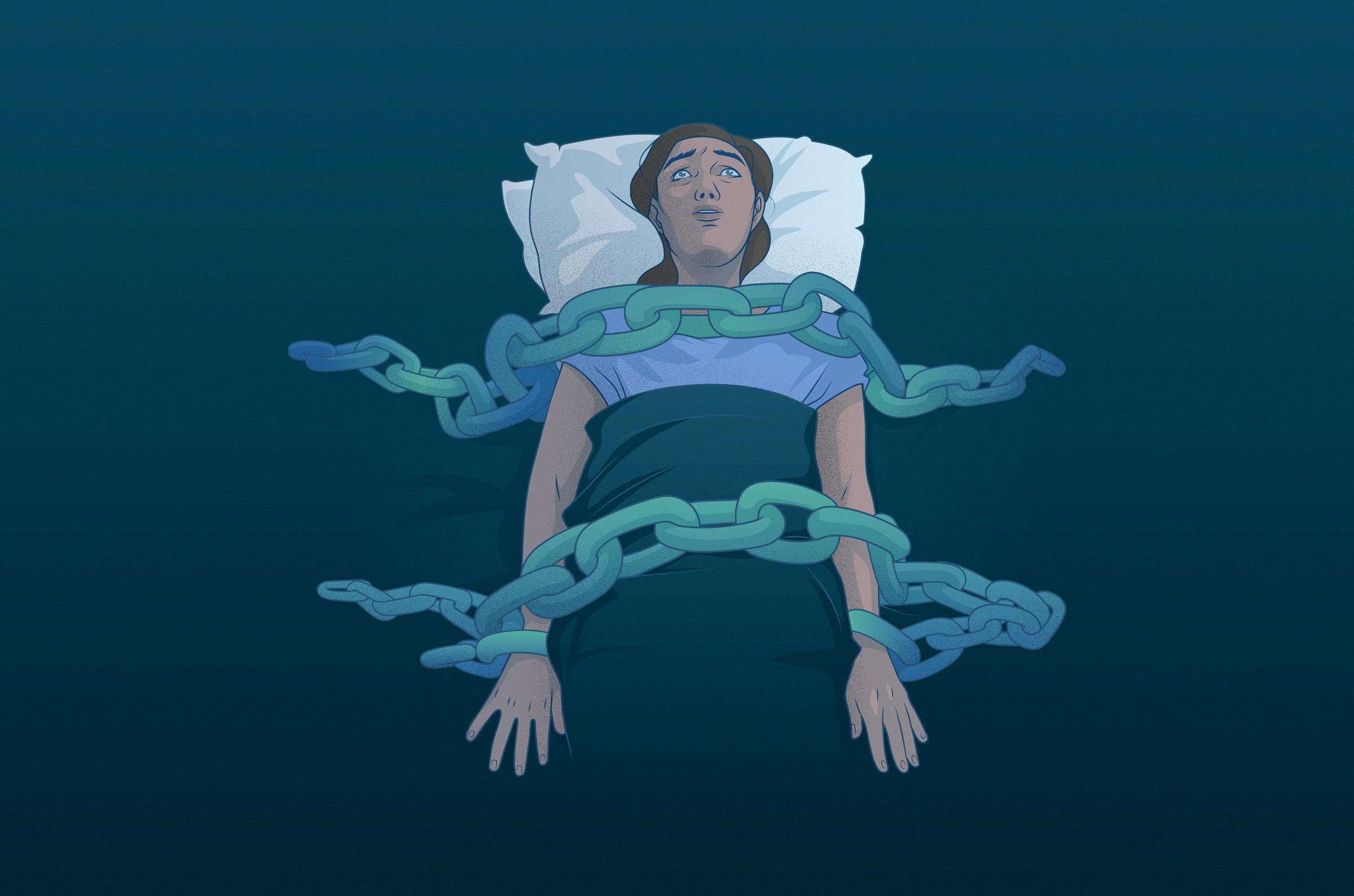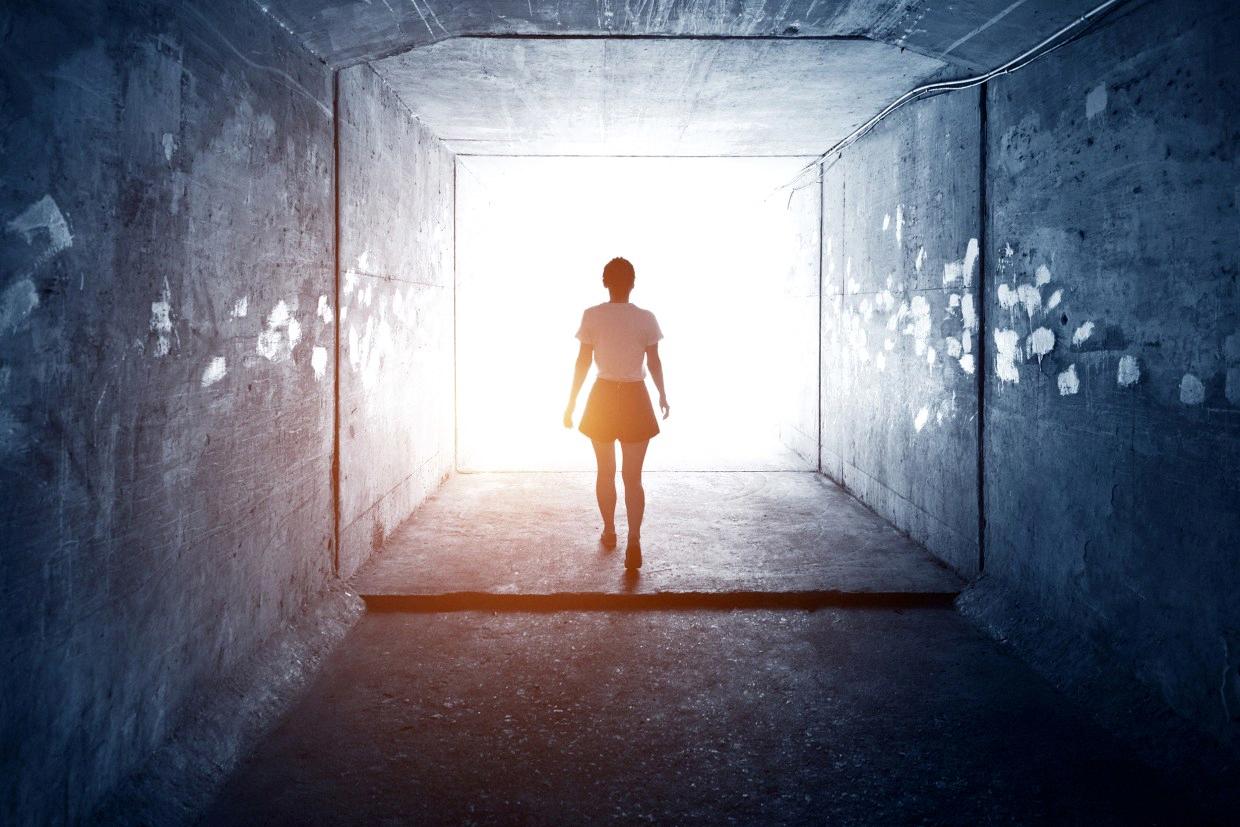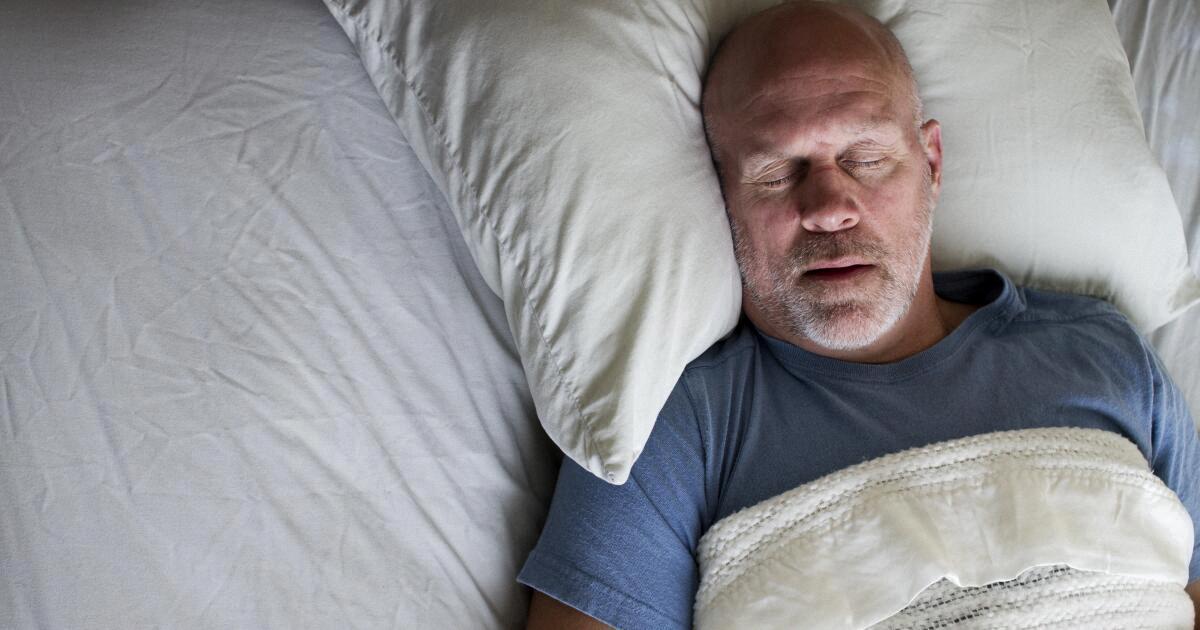Sleep paralysis is a serious sleep disorder that can be frightening for those who experience it. It is characterized by the inability to move or speak while awake, yet stll conscious. People who suffer from sleep paralysis may feel as if they are unable to breathe properly or even suffocating. Although it can be very frightening and intense, sleep paralysis is not life-threatening; the episode typically only lasts a few seconds to minutes and can be managed with certain lifestyle modifications.
So, can you die from sleep paralysis? The answer is no. Despite the intensity of the experience, there are no known fatalities related to sleep paralysis. While it may feel like you’re suffocating during an episode, this sensation is not dangerous and will pass as soon as the episode ends. It’s important to note that serious health conditions such as heart disease or respiratory problems could make the sensation of suffocation more intense and longer lasting in people with sleep paralysis.
People often experience episodes of sleep paralysis alongside other sleep disorders such as narcolepsy, which affects approximately 7.6% of people in their lifetime. It often begins during adolescence but can become frequent in one’s twenties and thirties. Sleep deprivation and stress are two major factors that contribute to episodes of sleep paralysis; therefore, it’s important to get adequate rest and manage stress levels in order to reduce the risk of experiencing an episode.
Unfortunately, there aren’t any proven therapies that can stop a sleep paralysis episode altogether; however, most people report that focusing on making small body movements (like moving one finger then another) helps them recover more quickly from an episode. Additionally, lifestyle modifications such as getting adequate rest and managing stress levels may help reduce the frequency of episodes over time.
In conclusion, it’s important to remember that although episodes of sleep paralysis can be intense and frightening, they are not life-threatening or dangerous in any way. With proper management techniques such as getting enough rest and managing stress levels appropriately, individuals can reduce their risk of experiencing an episode over time.
The Dangers of Sleep Paralysis
Sleep paralysis can be a frightening experience, and it can cause anxiety. It is not life threatening, but it can have some risks associated with it. In rare cases, sleep paralysis may be accompanied by hallucinations, which can be disturbing or even dangerous if they lead to irrational behavior. It can also contribute to a lack of quality sleep, which can have long-term health effects. If you experience frequent or severe episodes of sleep paralysis, it is important to talk to your doctor so that they can rule out any underlying medical conditions or other sleep disorders that cold be contributing to the problem.

Source: sleepcycle.com
The Dangers of Sleep Paralysis: Can You Suffocate?
No, you cannot technically suffocate in sleep paralysis. Although it can feel like suffocation due to the rapid and irregular breathing that occurs during REM sleep, thee is no medical evidence of a person actually suffocating from sleep paralysis. During sleep paralysis, your body is essentially still asleep, which means that your body is not actually in danger. However, the feeling of not being able to breathe can be very frightening and can cause further physical symptoms such as an increased heart rate or chest tightness. It is important to remember that although the sensation may be very real, it is not dangerous and will pass with time.
The Duration of Sleep Paralysis
The longest reported duration of sleep paralysis is up to an hour, although it is more commonly experienced for a few seconds up to a few minutes. It is important to note that episodes lasting longer than several minutes may cause the person to experience fear or panic.
How to Overcome Sleep Paralysis
To get out of sleep paralysis, it is important to focus on making small body movements. Begin by moving one finger, then the next, before gradually moving other parts of your body. This can help you regain consciousness faster and break the paralysis episode. Additionally, it is beneficial to practice relaxation techniques such as deep breathing and muscle relaxation in order to reduce sleep paralysis episodes in the future. If your sleep paralysis episodes are frequent or severe, it may be beneficial to speak with a medical professional about further treatments options which may be available.
Causes of Sleep Paralysis
Sleep paralysis is a phenomenon that can occur durig the transition from wakefulness to sleep or from sleep to wakefulness. It is triggered by a variety of factors, such as changes in your sleeping patterns (such as irregular hours, shift work, or jet lag), poor sleep habits (including drinking caffeine late in the day or not getting enough sleep), narcolepsy (a long-term disorder that causes sudden episodes of deep sleep), and post-traumatic stress disorder (PTSD). Additionally, certain medications, alcohol consumption, and mental health conditions can also be potential triggers for sleep paralysis. It is important to discuss any potential triggers with your doctor if you experience recurrent episodes of sleep paralysis.

Source: nbcnews.com
The Demon of Sleep Paralysis: A Closer Look
The demon that is commonly associated with the phenomenon of sleep paralysis is known as the Night Hag or Old Hag. It is a supernatural creature that is believed to sit on an individual’s chest while they are sleeping and prevent them from moving. The sensation of the Night Hag sitting on one’s chest may be accompanied by a variety of symptoms, such as difficulty breathing, a feeling of pressure or tightness, an inability to speak or scream, and a sense of terror. In some cases, individuals may also experience visual or auditory hallucinations during sleep paralysis episodes.
The Rarity of Sleep Paralysis
No, sleep paralysis is not rare. In fact, it is estimated that up to 40% of people may experience it at some point in their lives. It most often begins during the teen years, but can occur at any age and may even have a genetic component. People who have family members with sleep paralysis are more likely to experience it themselves.
The Effects of Sleep Paralysis on Eye Movement
During episodes of sleep paralysis, it is possible for some people to open their eyes while others may find they can’t. It is more common to experience difficulty in taking deep breaths and a feeling of chest restriction. It may also feel as though you are unable to move any part of your body.
The Mystery of Why We Cannot Scream in Dreams
Dreams are a product of our subconscious mind and the way it processes and interprets information. Our conscious mind, which controls motor skills such as running, punching, and screaming, is not active while we are in REM sleep. Since our conscious mind is not in control during this time, we cannot physically move or make noise to express ourselves within the dream world. Additionally, the muscles that control screaming are generally relaxed during sleep, making it impossible to generate enough force for a scream to occur.

Source: newyorker.com
Can Sleep Paralysis Occur Over Multiple Nights?
Yes, it is possible for sleep paralysis to happen two nights in a row. It is more likely to happen when someone is already prone to experiencing it, or if they have been experiencing sleep deprivation. This can be due to high levels of stress, jet lag, or other lifestyle factors. When someone has experienced sleep paralysis once, they may be more likely to experience it again in the future. It is important to maintain healthy sleep habits and try relaxation techniques such as deep breathing and progressive muscle relaxation in order to reduce the occurrence of sleep paralysis.
The Phenomenon of Sleep Paralysis: What Do People Experience?
During sleep paralysis, people may experience vivid hallucinations that involve seeing and sensing ghostly bedroom intruders. These intruders can take on many different forms depending on cultural context, but some of the most common include shadowy figures, monsters, animals, extraterrestrials or demons. People may also experience auditory hallucinations such as voices or whispering. In some cases, these hallucinations can be accompanied by a feeling of pressure or being choked. These experiences often cause intense fear and anxiety that can last until they are able to move again. Research suggests that sleep paralysis is caused by the brain’s inability to transition btween states of wakefulness and REM sleep.
The Prevalence of Sleep Paralysis
Sleep paralysis is a fairly common phenomenon, affecting an estimated 7.6% of the general population during thir lifetime. While this may seem like a relatively low percentage, it still translates to millions of people worldwide who have experienced or are at risk of experiencing sleep paralysis. People from all walks of life and from all age groups can be affected by SP, though it is most common among teenagers and young adults.
In addition to the prevalence of SP among the general population, research has shown that individuals with mental health issues such as depression and anxiety are more likely to experience sleep paralysis compared to those without mental health issues. In fact, up to 40% of people with mental health disorders report experiencing SP at some point in their lives. Furthermore, people with narcolepsy or idiopathic hypersomnia (excessive daytime sleepiness) also have higher rates of SP than the general population.
The Age Range of Sleep Paralysis
Sleep paralysis can occur at any age, but it is most common among children, adolescents, and young adults (ages 7 to 25), with episodes becoming more frequent in the 20s and 30s. Sleep paralysis typically involves a feeling of being conscious but unable to move or speak while falling asleep or waking up. It can last from a few seconds to several minutes and may be accompanied by fear and panic. During an episode, some people may also experience vivid hallucinations or a sense of an intruder in the room.

Source: healthgrades.com
The Visual Experience of Sleep Paralysis
Sleep paralysis is a phenomenon that happens when your body is in the transition between REM sleep and waking up. During this time, you may experience a state of being conscious but unable to move or speak. The paralysis can be accompanied by vivid hallucinations, such as seeing strange figures, feeling sensations like being held down, or hearing voices. You may also feel intense fear and panic durng this episode. The episode itself typically lasts anywhere from a few seconds to several minutes. It’s important to note that while sleep paralysis can be frightening, it is not dangerous and doesn’t cause any physical harm.
Conclusion
In conclusion, sleep paralysis is an experience that affects more than 7.6% of people in their lifetime, typically during adolescence and into the 20s and 30s. It is not life-threatening, but it can be very unsettling as it can cause anxiety and mimic symptoms of suffocation. Although there is no proven therapy to stop a sleep paralysis episode, focusing on small body movements such as moving one finger then another may help to recover from the episode more quickly. It is important to seek medical attention if sleep paralysis episodes become frequent or disruptive to everyday life.
